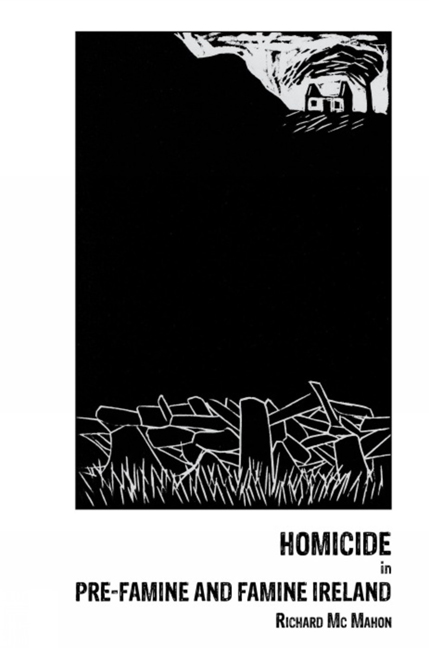Book contents
- Frontmatter
- Dedication
- Contents
- List of tables and figures
- Preface
- ‘A violent society’?
- 1 Homicide rates in Ireland, 1801–1850
- 2 ‘Do you want to pick a fight out of me?’: Homicide and personal relations
- 3 ‘Sending them to heaven’: Homicide and the family
- 4 ‘The tranquillity of a barrel of gun powder’: Homicide and land
- 5 ‘The madness of party’: Homicide and sectarianism
- Conclusion
- Appendix one: Methods and sources
- Appendix two: Homicide and motive
- Bibliography
- Index
Conclusion
- Frontmatter
- Dedication
- Contents
- List of tables and figures
- Preface
- ‘A violent society’?
- 1 Homicide rates in Ireland, 1801–1850
- 2 ‘Do you want to pick a fight out of me?’: Homicide and personal relations
- 3 ‘Sending them to heaven’: Homicide and the family
- 4 ‘The tranquillity of a barrel of gun powder’: Homicide and land
- 5 ‘The madness of party’: Homicide and sectarianism
- Conclusion
- Appendix one: Methods and sources
- Appendix two: Homicide and motive
- Bibliography
- Index
Summary
Ireland in the first half of the nineteenth century could be a violent place. In certain areas, in particular Co. Tipperary and, at times, in other locations, rates of homicide could be considerably higher than those found in present-day Ireland and Europe. The nature of some violent activity also suggests that violence could, in certain contexts, come to play a prominent part in the socio-economic, cultural and political life of the country. Pre-Famine Ireland can at times appear, from the perspective of the early twenty-first century, to be an extraordinarily violent place with groups meeting in open combat at social gatherings such as fairs to vent sectarian or factional animosities or at events such as elections to express political rivalries. Indeed, the most striking difference between that time and the present is the incidence of group and collective violence, particularly, though not exclusively, in the early decades of the nineteenth century. The periodic outbreaks of unrest where violence was used to address wider socio-economic grievances particularly relating to land also suggests a society where violence could, at times, become the primary means of dealing with economic and social conflicts. Both agrarian unrest and sectarian violence might easily offer the impression of a country in which violence was a dominant means of dealing with conflict, and undoubtedly helped to feed perceptions of Ireland as a violent society.
Such activity needs to be seen in context, however. The available statistical evidence indicates that, in much of the country and for much of the period under review, the extent of violence was contained. The incidence of homicide was not particularly high; it was comparable, on a national level and in most individual counties, to rates found in other countries at the time and is by no means out of line with rates found in modern-day Europe. There is also little evidence that rates of homicide were much higher in some areas in the nineteenth century than they had been in the eighteenth. The more qualitative evidence drawn from the responses offered to the Poor Law Commission also indicate that violent conflict was by no means ubiquitous or a major source of social unrest.
- Type
- Chapter
- Information
- Homicide in pre-Famine and Famine Ireland , pp. 158 - 175Publisher: Liverpool University PressPrint publication year: 2013



